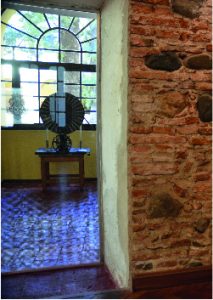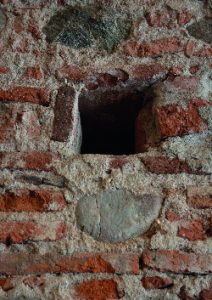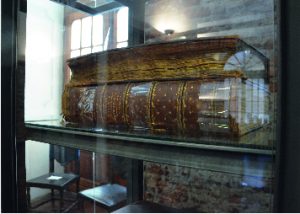[Audioguide]
The Order of the Society of Jesus formed this collection of books between 1599 and 1767. It is the first Library of the University (1613) and it includes copies representing the different branches of knowledge such as physics, medicine, algebra, geometry, botany, zoology, geography,history, philosophy, linguistics and theology among others.
Most of these books were brought from Europe since Córdoba had no printing press until 1764. A few of them came from Lima (Peru).
This library held around 6000 volumes during the Jesuit period (1599-1767). After the expulsion, many were sold and many were lost. At present, the University holds around 2500 volumes.
The Jesuit Collection is open to the public. Lately, 500 books have been digitised and may be consulted online on www.bmd.bmayor.unc.edu.ar
In 2016, the collection was enlisted in UNESCO’s Memory of the World Register for Latin America and the Caribbean.
Temporary exhibit «About expertise, plants and science»
ENTER

6 – A. View of the National School of Monserrat.

[Audioguide]
Through these windows we may observe the National School of Monserrat. Presently, it is a secondary school within the orbit of the National University of Córdoba.
It was founded in 1687 by Ignacio Duarte y Quirós. In the beginning, it was a convictorium or students’ residence. A few years after the Jesuits were expelled, the School of Monserrat moved to its present location.
6 – B. Holes in the walls (Putlog)

[Audioguide]
In old masonry, holes were left in the walls of a structure under construction to “put the log”, hence the name putlog scaffold. Logs or beams were introduced in these holes to support a working platform. This scaffolding system uses the building’s wall for support and is very stable.
We may observe these holes in most rooms of the Jesuit Library.
6 – C. Paris Polyglot Bible

[Audioguide]
It is one of the most important volumes of the collection, since it is an extraordinary achievement in printing and scholarship. This edition of the Bible is the third of the great Polyglots (the other three being the Complutensian Polyglot, the Antwerp Polyglot, and the London Polyglot). It is in seven languages: Hebrew, Samaritan, Chaldaean (Aramaic), Greek, Syriac, Latin and Arabic, showing the interest in returning to the original texts of scripture but also providing the version in Samaritan and the Syriac and Arabic translations of the Old Testament. It was printed in Paris by Antoine Vitré between 1629 and 1645.
This edition is organised in nine books but divided in ten volumes. Regarding the design of the page, the different versions are presented side by side in columns. This represented a significant challenge for the compositor or typesetter, since some of these languages are written from left to right, others from right to left, and many use different alphabets.
